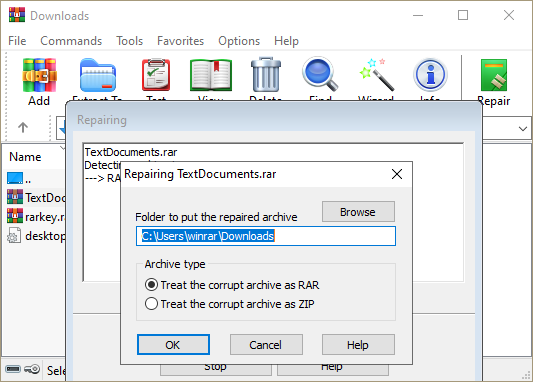
Examples to compress a folder: rar a -r yourfiles.rar *.txtĬreates archive yourfiles.rar and compresses all.

For more detailed information, open the rar.txt file in the WinRAR directory which contains the RAR console version user’s manual. To get a listing of the options for the rar and unrar commands, open a command window, cd to the WinRAR directory, and type rar or unrar and then press enter (rar /? or rar help may also be used, use rar >rar_cmds.txt or unrar >unrar_cmds.txt to print the command options to a file). The syntax for using the WinRAR executables is: RAR or UNRAR. Using WinRAR’s command-line tools is similar to those for IZArc and 7-Zip. Although WinRAR is shareware, it can be used on a trial basis for 40 days. Both are located in the “C:\Program Files\WinRAR” folder in the installable version. It includes two command-line tools, rar.exe and unrar.exe, where rar.exe compresses and unrar.exe uncompresses files. WinRAR is a popular and powerful archive manager that can be used from the command-line or with scripting languages such as batch files. The information in this guide was tested on a Windows PC running Vista. This guide is an extension of a previous post, Automate Zipping Tasks using the Command-line Interface that explained the use of the command-line tools for two free compression utilities, IZArc and 7-Zip. Do not need donate for RAR Repair Toolbox.This guide describes the use of the WinRAR command-line tools (v5.01) for compressing and uncompressing files in a directory and their use in batch files (for IZArc and 7-zip, see this post). Freeware version of RAR Repair Toolbox is available for anyone and there are no restrictions for the time of evaluation. Unlike freeware, open source programs and GNU General Public License (GPL) applications, RAR Repair Toolbox is covered by its own license agreement. Note: RAR Repair Toolbox software is offered by the professional software team development of and can be Downloaded for free without some kind of additional provisions.




 0 kommentar(er)
0 kommentar(er)
